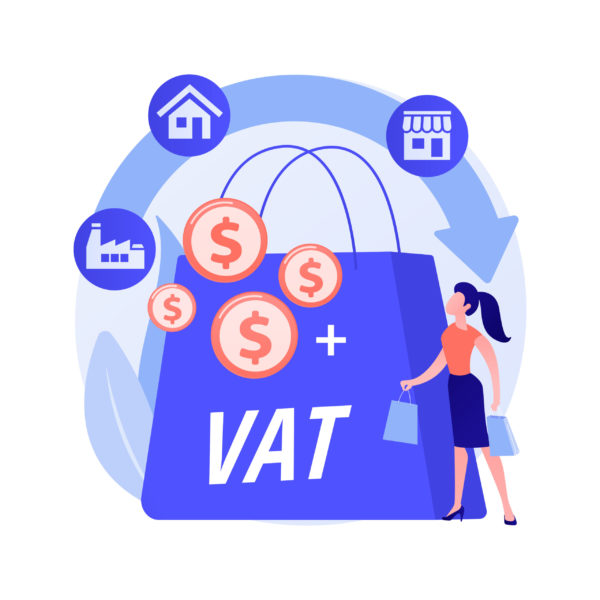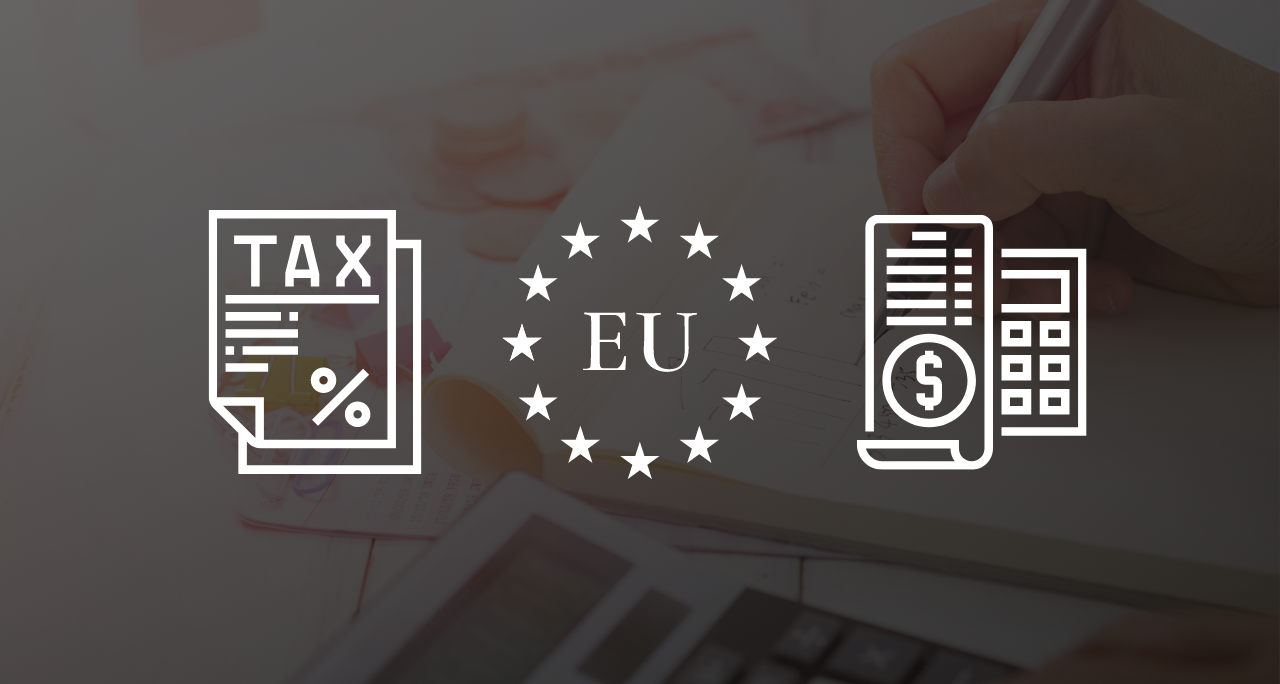The Value Added Tax or simply VAT is a universal tax applied to the sales of most of the goods or services throughout the EU, including digital ones. Because VAT is a consumption tax, the end consumers are the ones that effectively pay it.
However, the sellers (merchants and/or marketplaces – and potentially your business) are the parties who are responsible for collecting and remitting the VAT to the appropriate tax authorities.
While you might have been used to the VAT rules in the past, the European Union recently updated its taxation rules for distance sales and mandated some new changes that entered into force on July 1, 2021. These changes impact all merchants that sell across the borders of their home countries to EU based consumers.
Don’t worry, the actual VAT tax rate itself hasn’t changed. The majority of the changes focus on thresholds for tax collection and VAT reporting for EU sales.
Today, let’s break down everything you need to know about the new VAT updates in EU. This way, you’ll be able to make sure that you comply with the changes and are not adversely affected by them as an eCommerce seller in a post-COVID world.
What Are the Main Points for the New VAT Updates?
The new VAT updates make your eCommerce business run more smoothly by facilitating trade and streamlining the taxation process.
Thresholds for VAT Collection Registration
As of July 1, 2021, any merchant who makes more than €10,000 (~$11,800 USD) in sales to EU countries must collect and remit VAT for the sales performed to end-consumers in the EU. In other words, if your eCommerce business makes more than €10,000 in sales to EU based consumers, you must collect and remit VAT for those sales.
Prior to this July update, each country generally had their own rules and thresholds that, even though they were based on the EU VAT Directive, were not aligned across the entire EU. To give an example, the thresholds applicable for VAT registration were different from one country to another, meaning that a merchant was responsible for VAT collection in a EU country if they exceeded a specific volume of sales in that particular market in a year’s time. This threshold used to be around €35,000 for most EU countries, with some of them having a significantly higher or lower threshold.

By unifying the VAT threshold at the level of EU, businesses that carry out distance sales now have a simplified taxation process (merchants may look at all of their EU sales, instead of analyzing each country individually). Note that, despite this change, the place where you tax a service sale is the same place where you taxed it before the new legislation.
A business that meets the €10,000 threshold has the obligation to register for VAT purposes and to simplify the process, it has the option to either use the OSS (or One-Stop Shop) or IOSS (or Import-One-Stop-Shop) platforms, depending if they are an EU or non-EU business. The new EU-wide OSS/ IOSS platforms are an extension of the old MOSS platform, that was implemented successfully for the sales of Electronically Supplied Services (ESS), among others.
The new platforms make the VAT grievance process much easier as you simply need to register through them in a single EU country, where you declare and pay the VAT collected from all EU countries you’re selling to. Thus, only one quarterly/ monthly return has to be submitted in the EU Member State where you signed up for OSS/ IOSS. Note that the registration for OSS may be done in the country where your business is already registered, if you are a EU based company.
OSS/ IOSS registration is voluntary as merchants still have the option to register in each individual Member State they are selling to and handle their VAT returns in each of these countries.
- What’s the change? Previously, the threshold for the VAT was set at the country level. Now, the threshold is set at the European Union level, so all eCommerce merchants in the EU have to do the same thing
How Does This System Work?
Let’s break down the process to pay the VAT as both an EU merchant and a non-EU merchant.
If you’re a merchant from the EU making B2C cross-border sales to other EU states (not your home market):
- Simply apply the VAT rate from the member state where your shopper is located. Collect the VAT for every B2C sale made to that member state (no VAT is applicable for B2B sales, as the shopper will apply the reverse charge mechanism in the country where it is located – a VAT ID validation is however required).
- Register with the OSS in the member state of your choice (most likely the state where you run your business)
- Declare and pay your VAT for all those sales in quarterly returns. The returns are given to the member state where you registered for the OSS platform

If you’re a merchant from a EU country selling to other EU countries, you only need to register for the OSS platform once in any of the EU countries. Your new OSS account will let you handle taxation for all the EU countries you sell into. This significantly simplifies the taxation process for all EU eCommerce store owners.
- What if you make less than €10,000 from all your EU sales? In that case, continue to apply VAT domestic rules from your country of origin. You won’t have to sign up for the OSS platform.
If you run an eCommerce business as a marketplace, you will have to take over the VAT obligations of all the merchants selling through your marketplace. You may sign up with the OSS to pay the VAT collected for the sales of your merchants’ products.
- What if you are a B2B business? In that case, you don’t have to worry about special registration. The “reverse-charge” mechanism is in effect, meaning the seller does not collect VAT at the point of sale, but has to collect and validate instead the VAT identification number of the buyer. In any transaction, the B2B buyer (not you, the seller) is the one who needs to handle VAT in their country of residence
New Process for Import VAT-IOSS
The July 1st, 2021 EU taxation update also introduced the IOSS or Import One-Stop Shop, a VAT platform for non-EU businesses that sell to EU customers. All a seller has to do is sign up for the IOSS system, then use the online portal to both report and pay the VAT.
- Register with the IOSS (optional) in order to declare the sales made to end-consumers from EU member states
- Collect the VAT due from all B2C shoppers from EU countries
- Submit your VAT returns monthly using the IOSS platform and make the VAT payments to the EU member state where you registered for the IOS platform
As you can see, this new system should make paying the VAT much smoother for all global eCommerce merchants selling to the EU.
The difference between IOSS and OSS is that the first requires monthly payments, not quarterly. The IOSS requirements only apply to:
- Online sales that are B2C imports of goods from outside the EU to inside the EU
- Consignments of €150 (~$176 USD) or below or the equivalent of the local currency in the consumer’s country.
Using the Import One-Stop Shop system can simplify matters for your clients as well, as goods may go through customs faster since the VAT will already be accounted for/paid.
However, keep in mind that IOSS covers consignments, not individual items/products. For example, if a customer orders several individual items for more than €150 in the same order, IOSS can’t be used. Additionally, IOSS can only be used for the VAT for items not subject to excise laws, like tobacco, alcohol, etc.
Summary
As you can see, these changes to VAT laws significantly impact all online sellers of digital goods to customers in the EU, and hopefully for the better. That said, anyone who sells anything online will be affected by these changes because the online market is a truly global system.
The new VAT laws should streamline VAT payments and receipts for everyone. But if you run an online store and think you deal with B2C EU customers, you need to make sure that:
- You list the VAT charges that may apply to their order on the checkout page, so they know what they are paying for.
- You register for the OSS or IOSS depending on where your company is based.
This way, you can rest assured that your VAT payments are handled on time and in full taxation compliance.
2Checkout’s ordering engines include up-to-date taxation rules that you can set for any market you’re selling to. We ensure financial compliance for all your cross-border sales, so you can focus on growing your business.





